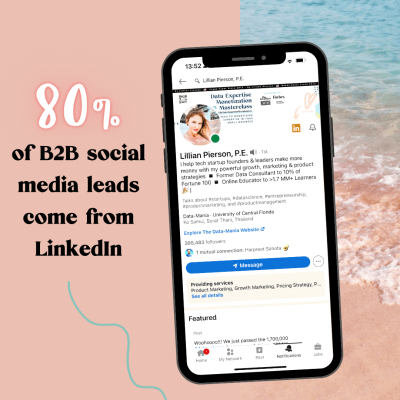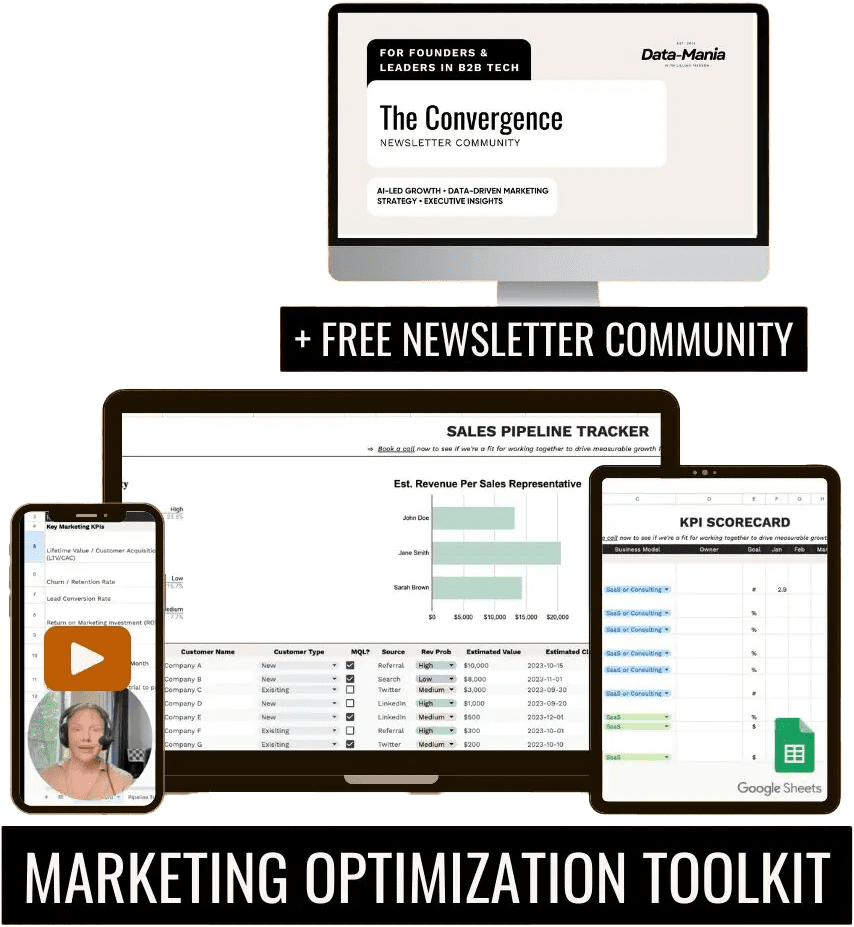- What kind of content is most effective for growing a tech startup quickly and organically
- Pro-tips on how to streamline and minimize the amount of work required to start and maintain a content marketing for startup initiative, and…
- The best way to allocate your startup marketing budget for maximum growth – based on details of marketing budgets for different phases of startups.

- Why You Need Consistent Content Marketing for Startup Growth
- Proven Content Types To Quickly & Organically Skyrocket Your Growth
- 2 Categories of Content You’ll Need To Get Started
- Content Types That Perform Well for Early-Stage Tech Startups
- Pro-Tips On How To Streamline & Stay Consistent
- Tech Startup Marketing Budgets
- Wrapping Things Up
Why You Need Consistent Content Marketing for Startup Growth




Proven Content Types To Quickly & Organically Skyrocket Your Content Marketing for Startup Growth
2 Categories of Content You’ll Need To Get Started With Content Marketing for Startup Growth
Free Content
- That they can and should trust you as an expert in your area, and…
- That your products or services are valuable and worth paying for
Paid or Gated Content
- Online and continued learning programs
- Photographs or stock images
- Competitor or market research
- Apps and even some software programs
- E-books, white papers, PDFs and other long-form texts


Content Marketing for Startup Growth: Content Types That Perform Well for Early-Stage Tech Startups
- B2B (Business-to-business) marketing content is all about showing how your product or service can help other businesses solve specific problems. Think white papers, webinars, and e-books that go into detail about how your solution can make a difference.
- B2C (Business-to-consumer) marketing content tends to be focused on making a connection with your customers and building your brand. This might include things like social media campaigns, influencer partnerships, and product videos that show off your brand or offers in a fun, relatable way.
- D2C (Direct-to-consumer) content is about building a direct relationship with your customers and getting them to buy. This could include things like product demos, user-generated content, and email campaigns that make it easy for customers to buy what they want.
Blog Articles
Companies that actively publish blogs have 126% better lead growth (Yourblogworks.com)


- Improve search engine rankings: Blogs provide fresh, relevant content that can be optimized with keywords, which helps improve a website’s search engine rankings (meaning, more website visitors). Having a library of great content also helps to keep people on your website for longer.
- Become a thought leader: Giving valuable insights and information on topics relevant to your audience can help you establish yourself and your business as the ‘go to’ expert in the industry.
- Generate leads: Using blogging as a lead generation strategy will help you attract new customers by providing them with helpful, valuable content.
- Build brand awareness: A blog is an excellent platform for you to tell your story and share your values and your mission.
- Enhance customer relationships: By engaging with your audience and building trust, blogging can help to build stronger customer relationships (it’s also a good place to direct people to FAQs).
- B2B
- B2C or
- D2C Products & Services
- Anyone – blog articles can be tailored so that they’re helpful to any ideal customer!
- Saas or Information Products
- Tech Implementation or Consulting Services
- Even Affiliate or Partner Products & Services
Examples of Blog Formats As Used By Tech Startups
- “Get Started with Flutter Authentication” by Auth0
- “Dialogflow CX Onboarding Guide” by Twilio
- “How to Train Your Own Object Detector Using TensorFlow Object Detection API” by Neptune.ai
- Server deployment checklists: This type of checklist could include tasks such as configuring firewall rules, setting up monitoring and logging, and testing backups.
- Security audit checklists: This type of checklist could include tasks such as reviewing access controls, testing for vulnerabilities, and monitoring for suspicious activity.
- Network infrastructure checklists: This type of checklist could include tasks such as configuring routers and switches, setting up VLANs, and testing network connectivity.
- Performance tuning checklists: This type of checklist could include tasks such as identifying bottlenecks, optimizing database queries, and testing load.
- GitHub’s “Octoverse 2022: 10 years of tracking open source” report, which highlights trends related to: Infrastructure as code opening up, big tech building big open source communities, and first-time open source contributors starting with commercially backed projects
- Stack Overflow’s “Developer Survey Results” report, which provides insights into the developer community’s demographics, job satisfaction, and technology preferences.
- VentureBeat “10 recently-funded tech startups to watch in 2023” which lists the top startups that recently raised venture capital in the year before.
- Identify relevant industry websites and blogs: Research industry websites and blogs that have a large audience and are relevant to your startup’s niche or industry.
- Build relationships with bloggers and editors: Reach out to bloggers and editors to introduce yourself and your startup. Building relationships with these individuals can make it easier to get your guest blog post published.
- Create high-quality, informative content: Make sure that your guest blog post is well-written, informative, and provides value to the website’s audience. Avoid using self-promotion and focus on providing helpful information that the website’s readers will find useful.
- Promote your guest post: Once your guest post is published, share it on your own website and social media accounts to increase it’s visibility and reach.
- Use it as a way to generate leads: Guest blogging can also be used as a way to generate leads by including calls-to-action within the post that encourage readers to visit your website or sign up for your newsletter.
- Diversify content: By featuring a variety of voices and perspectives, you’ll offer a more diverse range of content and appeal to a wider audience.
- Build a community: By featuring content from a variety of contributors, you’ll build a sense of community and engagement with your audience.
- Establish thought leadership: By featuring content from experts and industry leaders, you’ll establish your own brand as a thought leader in your industry and position yourself as a credible source of information.
- Drive traffic: By including internal backlinks to other pages on your website from within the contributor’s content, you can drive more traffic to important pages on your site.
- Enhance brand awareness: By featuring your company’s name, branding, and internal backlinks within the contributor’s content, you’ll be able to increase brand awareness and generate more leads for your business.
- Build domain authority in a cost-effective way: Using contributor content can be cost-effective as it allows you to leverage the expertise of others to create high-quality content without incurring the cost of producing it in-house.
- “What can we expect from Artificial Intelligence?” – This infographic from the startup FortySeven highlights the adoption of artificial intelligence within various tech industries.
- “Cybercrime Infographics: Illustrations Of The Past, Present, And Future Threats We Face” – This infographic from the tech publishing startup CyberSecurity Ventures provides an overview of the current state of cybersecurity, including statistics on data breaches and common attack methods.
- “Global Blockchain Technology Market in the Agriculture Sector 2018-2022” – This infographic from the tech market research company Technavio provides an overview of the growth and potential uses of blockchain technology across the agriculture sector.






- “The Future of E-commerce” by McKinsey & Company.
- “The Impact Artificial Intelligence Has on Industries Today” by Ivy Partners.
- “Ericsson Mobility Report” – A 5G report by Ericsson.
Examples of some of the deliverables and results from that work are shown below.


- You can use them to build trust with potential customers, as they provide a personal perspective on your product or service.
- You can use them to generate word-of-mouth marketing, as people are more likely to trust the opinions of people they know.
- You can use them to improve the visibility of your startup’s product or service, as these content types may be more likely to appear in search results.
- You can use these to create a sense of community and belonging around your brand and its values. You can use these to generate valuable feedback on your product or service, which you can then use to make improvements.
Where to Find Inspiration for Your Tech Startup Blog
Make Sure You’re Utilizing Effective On-Page SEO
Social Media Content
80% of business-to-business social media leads come from LinkedIn (Source: g2.com)


Popular Social Media Content Types for Tech Startups
- Demos and tutorials
- Short-form how-to guides
- Memes and funny content
- Educational or research-based posts
- Advance warnings about upcoming sales and promotions
- Contests and collaborations
- Testimonials
Example Topics for Social Media Content Published By Tech Startups
- A Twitter thread discussing the latest developments in artificial intelligence and machine learning
- A Twitter thread discussing the latest advancements in blockchain technology and its potential use cases
- A long form LinkedIn post discussing the latest updates in the field of quantum computing
- A YouTube video discussing the latest advancements in 5G technology and its potential impact on industries
- A TikTok video discussing the latest developments in virtual reality and augmented reality technologies
- A Instagram Reel discussing the latest advancements in the field of robotics and automation
- A LinkedIn slide show demonstrating the latest developments in internet of things (IoT) and smart devices
YouTube Videos: A Special Form of Social Media Content


- You can use YouTube videos to tell a story and build an emotional connection with your audience.
- You can use YouTube to create multiple series of valuable free video content that builds your audience and leads base as well as keeps your current audience engaged and loyal to your brand. This is akin to using Youtube to publish the same or similar educational or how-to content you’d publish on your blog.
- You can use YouTube videos to create a sense of community and belonging around your brand and its values by creating regular content and engaging with the audience.
- You can use YouTube videos to showcase your products or services in a visual and engaging way, which can help to directly attract potential customers.
- You can use video content to demonstrate how your product or service works, which can help to educate potential customers and answer any questions they may have.
- YouTube is a large and widely used platform, so creating video content for it can help you increase the visibility of your startup’s brand, products, and services.
- YouTube videos can also be optimized with keywords, titles, and descriptions so that your YouTube content attracts new leads and customers over the long-term future.
- Product demos: Provide an in-depth analysis of new technology products and compare them to existing products on the market (this is a good opportunity to showcase your own product or service).
- How-to tutorials and guides: Teach your audience how to use new technology products or services effectively and efficiently.
- Behind-the-scenes content (vlogs): Give your audience a glimpse into the day-to-day operations of your startup and give them a sense of the people and culture behind your brand.
- Industry insights and predictions: Share your thoughts and insights on the latest developments and trends in your industry, and provide your predictions for the future.
- Interviews with industry experts: Interview experts within your industry and discuss the latest developments and trends in the field.
- Case studies: Share how your product or service has helped other businesses solve problems or improve their operations.
Coding Demos
If they’re an appropriate vehicle through which to generate targeted leads for your startup’s offers, coding demos can be one of the most effective ways to grow your tech startup.


Consider Coding Demos If Your Business Model Is:
|
Consider Coding Demos If Your Ideal Customer Is A:
|
Consider Coding Demos If Your Offer Is:
|
The #1 Fastest Way To Quickly Establish Long-Term SEO Traffic for Your Tech Startup




How-To Use Coding Demos To Quickly Grow Your Tech Startup
- Creating a sense of community and belonging around the brand and its values by creating regular content and engaging with the audience.
- Generating buzz and interest around your startup and its product or service. Drive search traffic and leads to your startup’s website.
3 excellent coding demo portfolio examples to inspire your startup marketing plan


- Parallel Computing with Dask: A Step-by-Step Tutorial
- Evaluating Ray: Distributed Python for Massive Scalability
- Performing Non-Compartmental Analysis with Julia and Pumas AI
Sebastian Raschka: Consultant


- Information products (courses and books)
- B2B teaching deals that pop-up spontaneously due to the scale of his online reach and the quality of his contributions.
Jake Vanderplas: Consultant


- Speaking gigs
- Editorial positions and tutorial reviews (for journals, conferences, and websites)
- Event organization – Chairing and co-chairing of industry-related events
Pro-Tips On How To Streamline & Stay Consistent With Your Content Marketing for Startup Growth Initiative
5 Ways To Quickly Generate Content Idea
- Use keyword research to identify popular topics and questions related to your industry or niche. My favorite tool for keyword research is Keywords Everywhere.
- Look at what your competitors are writing about and see if you can offer a unique perspective or some form of added value. You can do this on most social platforms, but I recommend LinkedIn, TikTok, YouTube.
- Use social media listening tools to track mentions of your brand, industry, or niche and see what topics are resonating with your target audience. Don’t be afraid to set up an inbox alert for this using Google Alerts.
- Look at industry-specific news, events, and popular discussions to see what’s happening in your field and what topics might be relevant to your target audience. Good places for this type of research include Reddit & Quora.
- Use feedback from your customers or audience to generate ideas for content that addresses their pain points, goals, or interests. Place you can look for this type of feedback:
Set A Publishing Schedule & Stick To It
It’s a good idea to create a content / editorial calendar at least one or two months in advance. Having a formalized plan will help keep you accountable to your content publishing goals, as well as provide more structure to your content. Because no one wants a smorgasbord of technical topics spattered randomly across time!
Watch the video below to get my recommendations on how to create a content calender DIY-style.
It’s important that every effort you expend building your brand be spent in a strategic manner, to help you reach your overarching goals.
It’s important that every effort you expend building your brand be spent in a strategic manner, to help you reach your overarching goals. A content marketing plan and content calendar will help you work strategically.
If you’re scratching your head, wondering how to create a content marketing plan for startup growth. You can watch and learn from the video above or you can let me do all the hard work for you!
Using my Instructional Marketing Planner Trifecta, you will be able to plan and launch your startup’s most successful marketing initiative in 30 days or less.
Delegating Your Content Marketing for Startup Growth Needs
- It’s a great way for you to keep current on the latest in the industry
- It’s a great medium across which you can initiate genuine working relations with people in your target audience
- It offers built-in quality control
- It’s the more affordable option
- If you’re already earning $200/hour+ in fees and you don’t feel compelled to divert time from your earnings, then hire someone.
- If you already own a relatively successful start-up and you need content to act as a vehicle for in-bound traffic, but you have your hands too full in other areas of your business, then hire someone.
3 Ways To Quickly QA Your Content Before Hitting Publish
- Brainstorming a list of content ideas, and…
- Creating a publishing schedule via an editorial calendar
- Make sure your grammar and spelling are correct. Word’s Review features should be sufficient.
- If you’ve written an article, check your tone to see that it’s not too formal and academic. You want blog posts to be conversational in tone, as they are meant to help you establish a rapport with your readers. Word offers “Speak selected text”, but I prefer to use ttsreader. I like to listen to my writing and edit its tone that way before I publish it.
- Make sure to cite relevant sources with link backs and to avoid references that come from non-credible sources.
Details of Tech Startup Marketing Budgets for Different Types of Startups
When it comes to tech startup marketing budgets, it all depends on the stage of your startup.
If you’re just getting started and are still in the pre-seed phase, you probably don’t have a ton of money to throw at marketing! In which case, you’ll probably rely more on blogging, word-of-mouth and social media to get the word out.
But as you raise more money, like in the seed phase, you can start to put some real cash towards organic content marketing, paid advertising, and PR to get more eyes on your product.
Fast forward to series A or B and you’ve got a bit more money to play with. This is when you can start getting more targeted with your marketing campaigns and maybe even work with influencers to give your product a boost.
And if you’re in a later stage like series C or beyond, sitting on a bit more cash. This is when you can start thinking about big brand-building campaigns.
Self-Funded, Bootstrapped Tech Startup Marketing Budgets
New bootstrapped founders (like I was in 2012) are rarely able to spend more than 10% of their planned revenue on marketing. These days I reinvest 25% of our revenues to cover the marketing expenses of the business.New bootstrapped founders (like I was in 2012) are rarely able to spend more than 10% of their planned revenue on marketing. These days I reinvest 25% of our revenues to cover the marketing expenses of the business. If you’re a self-funded startup founder, you’ll be best off focusing on the more cost-effective content marketing for startup strategies (ones that usually only cost your time rather than physical cash) and can drive maximum growth. Here are a few options to consider:
- Search engine optimization (SEO): Blogs are one of the best ways to start ranking on search engine results pages (SERPs). Don’t expect to get results overnight, but trust me – they will come (when done right).
- Social media: Utilizing platforms like Facebook, Twitter, and LinkedIn can help you connect with potential customers and promote your brand.
- Collaborations: Partnering with industry influencers can help you increase the visibility and credibility of your brand (this could be a guest blog post, guesting on a podcast, etc).
- Email marketing: Building an email list and sending targeted, personalized campaigns can be an effective way to engage with customers and drive conversions. Create a freebie or low-paid offer to help build your list.
- Referral marketing: Encouraging your existing customers to refer friends and family can help drive new business at a low cost (consider offering an incentive).
VC-Backed Tech Startup Marketing Budgets
- Customer Acquisition: Invest in customer acquisition strategies that have a clear ROI and can drive sustainable growth. This can include paid advertising, search engine marketing, and influencer marketing.
- Brand building: Build your brand and establish a strong online presence through content marketing, search engine optimization, and social media marketing.
- Performance marketing: Invest in performance marketing channels such as affiliate marketing, referral marketing, and email marketing that can drive conversions and provide a clear ROI.
Wrapping Things Up







